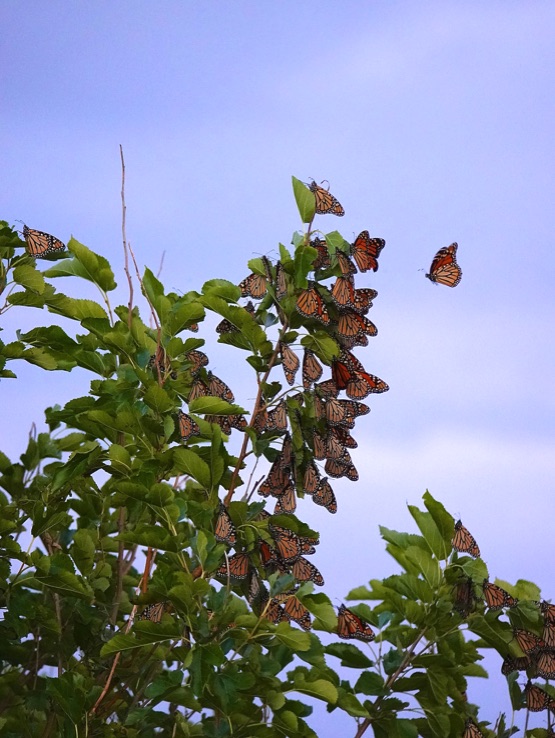October 2020
It's a never-ending debate in Cape May, whether September or October is the most exciting month for observing migration. Monarch butterfly migration usually peaks in October, and southbound songbirds feature an intriguing mix of tropical migrants, such as warblers, with ones that stay in the temperate zone, such as sparrows. The 2020 October featured excellent weather conditions for funneling migrants into Cape May, providing some consolation for those of us who usually travel regularly. As we said many times, if we had to be stuck someplace during the COVID-19 pandemic, Cape May wasn't a bad spot to end up.


October's Monarch migration was spectacular
A collection of birds heading to the tropics, clockwise from top left: Cape May Warbler, Black-throated Blue Warbler, American Redstart, Magnolia Warbler, young male Scarlet Tanager, female Scarlet Tanager, Black-and-white Warbler, Black-throated Green Warbler, Blackburnian Warbler, Northern Parula.
The beach in Cape May City in the light of the full moon.
Some familiar year-round birds of Cape May.
Above, l to r: Blue Jay, American Robin, Brown Thrasher. Below, l to r: Tufted Titmouse, male Northern Cardinal, female Northern Cardinal.
Saltmarsh Sparrow (left) and Nelson's Sparrow (right). Not long ago these were considered forms of the same species, which was known as Sharp-tailed Sparrow. I'm still not confident that I can always tell which one I'm seeing!
White-throated Sparrow
Swamp Sparrow
Brown Creeper
Red-breasted Nuthatch
Poison Ivy
Northern Flicker
Pine Siskin
Left: Marbled Salamander. Above: Bullfrogs.
Below left: Long-tailed Skipper. Below right: Great Egret.
Cooper's Hawk
Common Eider
Black-bellied Plover
Ruby-crowned Kinglet
Solitary Sandpiper
Cape May Point beach in late October, starting to look like winter.
Yellow-bellied Sapsucker